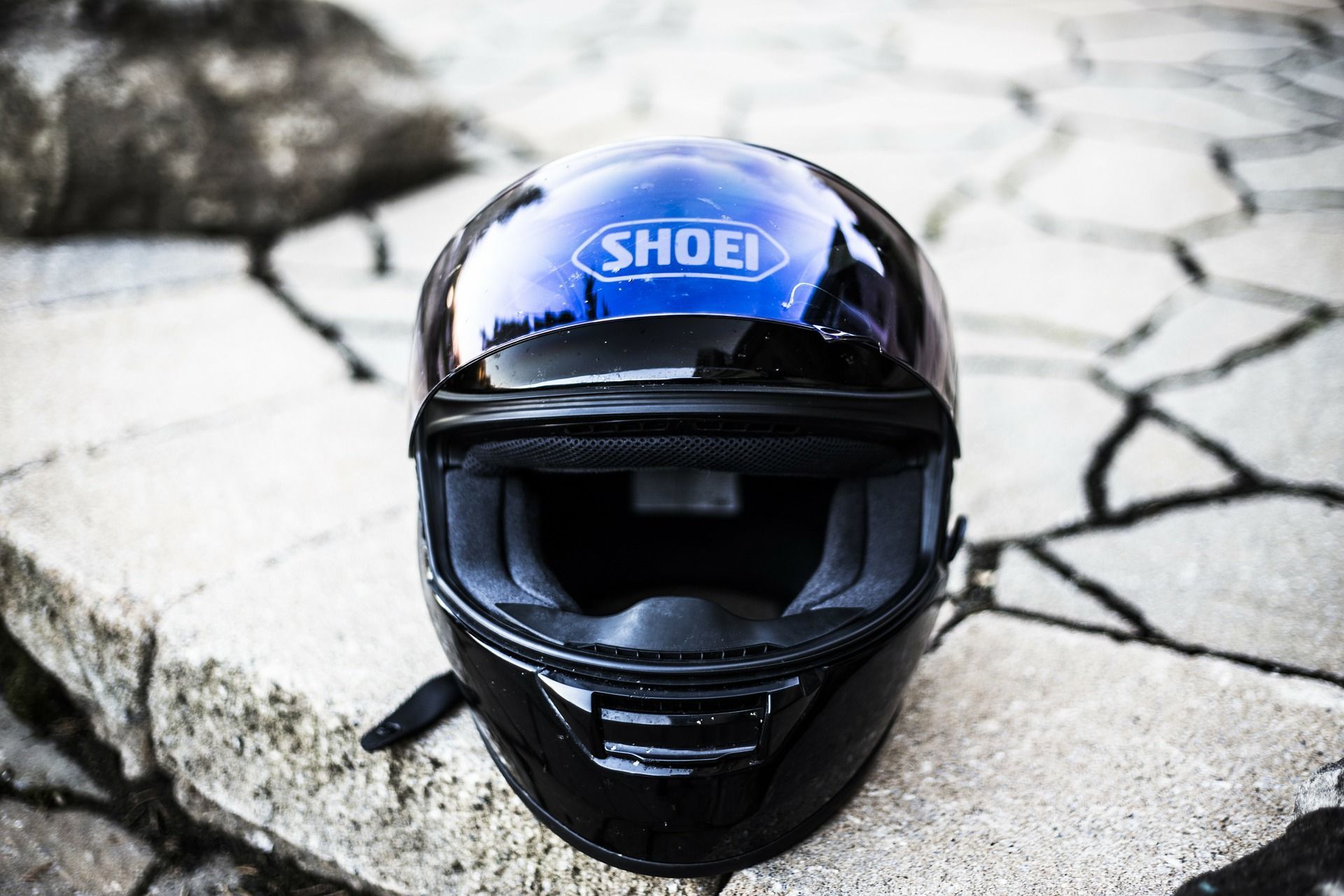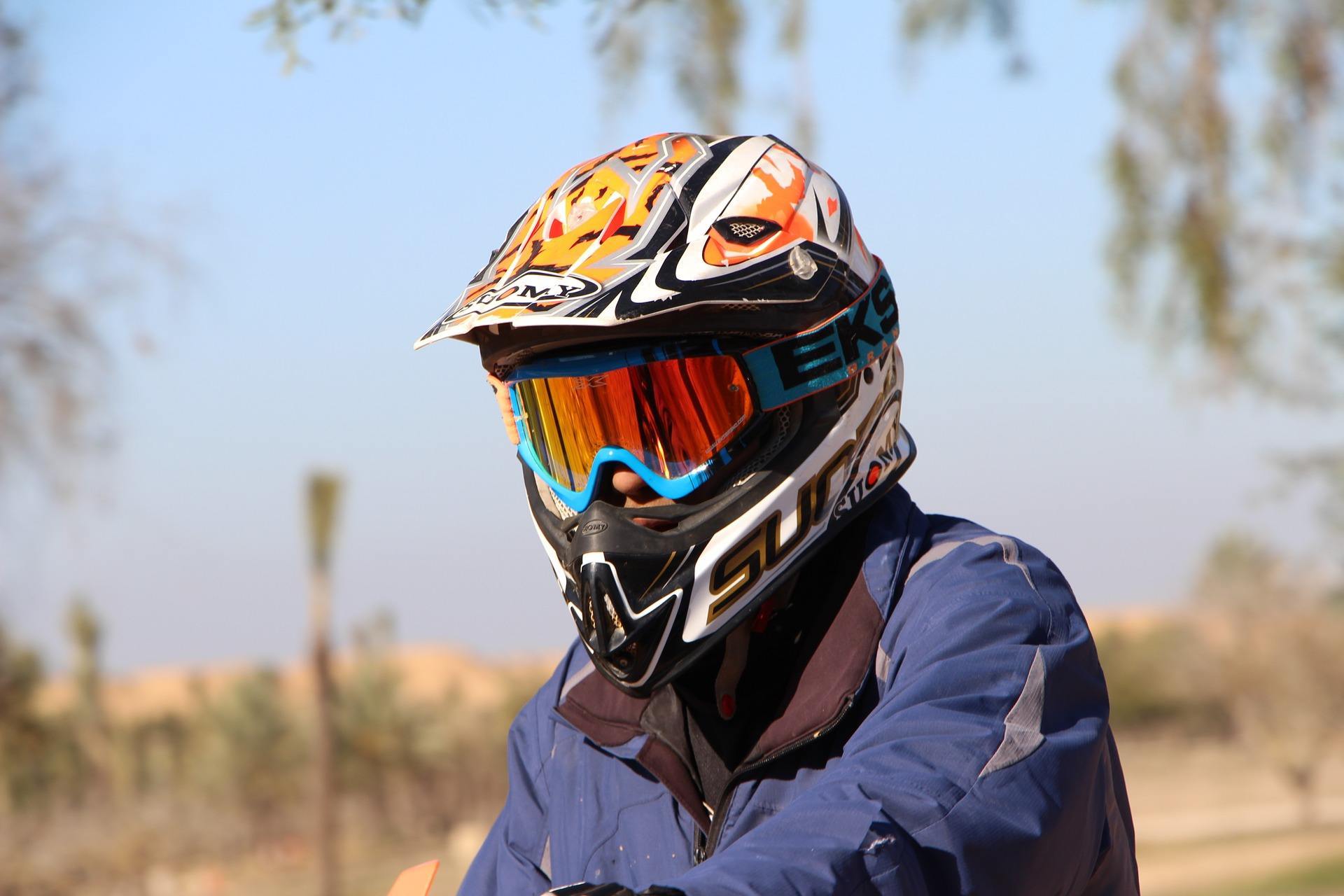Many people like riding a motorcycle because it helps them leave their busy lives behind and go on an exhilarating ride.
In order to experience this repeatedly without getting too worried about safety, motorcycle helmets are created.
There are many different types of motorcycle helmets that provide added protection for the riders.
How to Choose the Perfect Motorcycle Helmet for You
Your main consideration in choosing a motorcycle helmet is safety. You should never lower your standards in selecting one.
Make sure the manufacturer of the helmet follows the strict standards of safety.
For you not to feel overwhelmed with the many types of a motorcycle helmets, here are some factors you would want to consider:
Safety
How can you know if a helmet can protect your head in case an accident happens? You have to familiarize yourself with these terms: DOT, ECE, and SNELL.
DOT is the minimum safety standard that a helmet is must-have. ECE is close to DOT.
SNELL is a standard that is independent of DOT and ECE, so its standards are somewhat strict.
Material
The exterior part of the helmet should be made from carbon and Kevlar or a combination of any plastic that is lightweight and composite fiber.
For the interior part, it should be made from polystyrene, fabric that wick-dry or EPS since it absorbs well.
If there is a removable liner, it is better. Metal mesh vents are somewhat good quality of vents. You can also purchase a helmet with Nylex material that is antibacterial.
Check out: Cool motorcycle helmets
Shield and Visibility
In order to have a safe and fun motorcycle ride, there should be good visibility. However, for this factor, you need to compromise.
There are motorcycle helmets that have a wide eye visor, but your eyes will be more exposed to debris and dirt.
More expensive helmets have anti-fog which is good for riding under harsh weather and in winter.
Some have a tinted shield which you can drop down to protect your eyes against the sun.
Features and Heaviness
The helmet of your choice should not give you a stiff neck. It should properly fit around your head so that it will not cause any pain.
Some helmets have waterproof mic and speakers. Some have controls that are based on your voice.
Wind Movement
A good quality helmet has minimal wind resistance because this will not cause pain from the wind even if it is worn for a long time.
Therefore, you should not opt for helmets that have too much resistance against the wind or else, long rides will not be possible.
Brand
You should always make in-depth research on the manufacturer of the helmet that you want to buy.
Read the feedback from real customers so that you will know if it is a trusted brand or not.
Check out: Best Motorcycle Helmet Speakers
Types of Motorcycle Helmets
Full Face Helmets
Full face helmets give the best protection. However, if you prefer a helmet that is lightweight, this might not be the helmet for you.
- Full face helmets protect your head, jaw, and face.
- Your rides are quieter since this helmet can lessen the sounds of the road which can be deafening.
- You are protected from harsh weather conditions because this kind of helmet is sealed properly.
- It provides good visibility on the road due to its clear visor.
- You will have no problems with head, neck, or shoulder pains because it has minimal wind resistance.
- It can be a bit heavy since it gives complete protection to your head.
Open Face or Three-Quarter Helmets
Open face helmets can give much protection except on your face. This helmet is for you if you like to feel the wind against your face while you are riding on your motorcycle.
- Since the entire face is open, these helmets do not give protection to your eyes from various weather conditions. Thus, it is recommended to buy a separate eye protector if you prefer this helmet.
- Its biggest advantage is its visibility. You can see the entire view of the road without any part of the helmet blocking your eyes.
- Because the mouth is open, you can communicate more easily.
- The shields, which can be flipped down, give you some protection from harsh sunlight or flying debris. However, this helmet does not protect you from rain.
Modular Helmets
A modular or hybrid motorcycle helmet is a cross between full-face and open-face helmets.
- You can appreciate the features of full-face and open-face helmets.
- There is a movable chin bar that can be controlled with a single button. If the chin bar bothers you, pushing the button will slide this bar up to the helmet’s upper portion.
- This kind of helmet gives more comfort compared to full-face helmets that can be a bit more difficult to put on due to their snugness.
- The faceguard feature can be moved up, so it is easier to talk when needed.
- Because there are a lot of contraptions, these helmets are not lightweight and not sealed.
Half Helmets
This kind of helmet is more popular for scooter and cruiser riders because it is a skull cap.
- These helmets are light enough to make you feel like you are not wearing a helmet. In other words, you will not feel pressure around your head, and you can carry it with you without any difficulty. In addition, it is easy to put on.
- It also provides very good visibility.
- These helmets virtually do not give any protection because they only protect the upper part of the head. Moreover, they do not keep you safe from different weather elements.
- Having much wind resistance, you will likely have fatigue and pain due to the wind’s force after wearing a half helmet.
Off-Road Helmets
An off-road helmet is unique because it has features specially designed for those who like motorcross and racing. If you are into short races, you should consider getting this.
- An off-road helmet’s visor is long, so it is noticeable. However, you are protected from the UV rays of the sun.
- The chin protector is also long. Thus, debris and dirt will not get into your face easily.
- There are no problems with fogginess since there is no face shield. This also means better visibility for you.
- One special feature of this helmet is its vents. The heat and temperature inside the helmet are regulated due to these special vents.
Also Read: Best Motorcycle Helmet Brands
why do we wear motorcycle helmets anyways?
Are Helmets Necessary? The data is clear that helmets DO make us safer and reduce our risk of a fatal injury on the road. Unfortunately, less than 50% of riders wear them. In fact, it seems more like 22 percent! I always hear “I don’t want to wear one because it’s not cool.” What’s cooler than being alive? (This argument doesn’t usually work) Wearing a helmet will still allow you a stylish look while keeping your brain intact if you happen to have an accident. Prices are coming down each year too; you can find some for under $100, or even closer to $50 these days. There has also been a push for more universal helmet laws (meaning a helmet would be required regardless of what bike you are riding). Because of the disadvantages like hair damage, appearance, and even financial cost for riders who buy helmets simply to comply with the law versus actual protection.
Another point I hear is “You don’t need a helmet; look at all of these people riding around without one.” Well even if 100 percent of the riders are wearing their helmets correctly (which we all know is not true), that still means it’s possible that 50% aren’t. Every little bit helps to keep your brain intact! You might say it doesn’t matter because you’re experienced in riding. But motorcycle habits can get rusty after being away from them…especially after an injury or during a long layoff. Riding around without a helmet could lead to an accident you wouldn’t have otherwise had, if only it was there as a reminder of how important your head is!
A huge part of motorcycle safety is having the right gear. A good helmet will last years (I’ve personally got one that’s been going for 5+ years now and it’s still going strong). It also fits well and comes with proper impact padding should you have any spills. With the overall construction, look into things like how many vents are on it? How easy is it to change out the visor? Is there enough room inside for a Bluetooth speaker? Better yet, check out our list of recommended helmets before making your purchase. Wearing a motorcycle helmet is just part of the equation is making sure you’re safe out there.
Tips on how to care for your new motorcycle helmet
When you’ve just purchased your new helmet, follow these 4 tips for proper care and maintenance:
1) Put Your Helmet on as Soon as You Walk Through the Door – The first thing you should do after coming home from your favorite motorcycle store is put on your brand-new helmet. This will prevent any unwanted accidents while walking to or in your house. Just imagine how unfortunate it would be if you tripped over a rogue bag of dog food and landed face-first into the corner coffee table. That would really “ruin the mood”. So remember: always put those helmets on when they’re fresh out of their boxes.
2) Wash Your Helmet When Necessary – To keep your helmet looking great for many years to come, you need to make sure it’s clean on a regular basis. At least twice a year is recommended for most helmets but more often depending on how many times you ride or how many wet dogs you hug. Rubbing alcohol and water or mild hand soap are your best bets for cleaning but make sure to use caution. You don’t want the paint on your helmet to scrub off after rubbing it with a dirty sponge, now do you?
3) Go For A Ride At Least Once A Week – This is probably the most important tip in this article so pay attention: GO FOR A RIDE ON YOUR MOTORCYCLE AT LEAST ONCE EVERY WEEK! Yes, it’s a lot to ask of us and we’re lazy by nature but please do us all a favor and take a weeknight ride once every seven days at least. It will keep you fit and healthy while allowing everyone else in your household to sleep peacefully through the night.
4) Don’t Let Your Kids Ride On It – This one may seem obvious but you’d be surprised at how many people ignore this simple rule. Helmets are made for adults with adult heads and should not be worn by kids under 18 or 20 years old, depending on their exact size of course. They’re just too irresponsible and careless to be given such a precious thing as your brand new motorcycle helmet – that’s why they’re called kids right? So please don’t let them ride on it! Or if you do let them, make sure it’s only in a safe environment like a local park or college campus with lots of trees present to soft landings in the event of an accident.
If you follow these simple acts of prevention, your helmet will be in perfect condition and fully functional for years to come. Just remember our golden rule: “WEAR YOUR HELMET! EVERYWHERE, ALL THE TIME.”
Conclusion
Among the many different types of motorcycle helmets, have you chosen the right one for you?
The key to choosing the helmet is to know what features you want your helmet to have.
Since each helmet has pros and cons, you just have to weigh which type works for you. Remember that safety is your priority.

David Williams is an author with a passion for motorcycles and all things related to the world of two-wheeled vehicles. His expertise is evident on his website, The Moto Expert, where he shares his knowledge and insights with fellow enthusiasts. Follow him on social media to stay up-to-date on the latest motorcycle news, reviews, and trends. Whether you’re a seasoned rider or just starting out, David’s content is sure to inform and entertain. Join his community and become a part of the conversation today.





